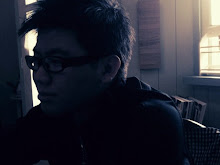Due to the deeds and status, some great person will be commemorated in a special place, either in museum or a specific monument.
As all we know, museum is a place where keeps the history of a particular country. All the great deeds will be recorded in the museum, including the dead of those greats and the deeds of these greats. But somehow, not only museum is functioning on this; some of other place such as The National Monument in Malaysia has the same function. The National Monument was built to recognise and honour those who gave up their lives in the cause for peace and freedom, particularly during the nation's struggle against the threat of Communism (the period of Emergency).
In other countries, they did the same thing too, such as Mount Rushmore National Memorial, the Jewish Museum, National Museum Malaysia and others. According to the article given, the Jewish Museum is to commemorate dead during the post-war Germany. In my opinion, it is quite successful in commemorating the dead; moreover it also represents the history of Berlins. It shows well in the design of the building through architecture languages. Based on Daniel Libeskind, there are 3 basic idea to form the Jewish Museum design which are the impossibility of understanding the history of Berlin without understanding the enormous intellectual, economic and cultural contribution made by Jewish citizens of Berlin, and the necessity to integrate physically and spiritually the meaning of Holocaust into the consciousness and memory of the city of Berlin and lastly the acknowledgement and incorporation of this erasure and void of Jewish life in Berlin.
I believe that it was a long way process for the design development for the Jewish Museum. And every design has its own reason and purpose is the lesson I had learned from this. The design itself interprets so well based on the 3 basic ideas. From every part of the buildings till the material using, the architect had taken into account to the design. For me, Jewish Museum not only succeed in commemorating dead, but it also exists with the value or artistic. In metaphor way of saying, it is like a masterpiece of an famous artist. Its design is full of depth.
Unlike in Malaysia, the National Monument is functioning to commemorate the dead soldiers in the past. Though its design is not as interesting as Jewish Museum’s, it shows difference through the design.
It is a 15.54m high monument which is made up of a diorama of seven bronze human figures, atop an oblong base; each figure denoting one of seven qualities: courage, leadership, sacrifice, strength, suffering, unity and vigilance.
The topmost figure, at the centre, holds aloft the Malaysian flag. He is flanked on the left and right by two other soldiers, both armed; the figure on the left is armed with a machinegun, while the other carries a rifle and a bayonet.
Kneeling slightly on the right side of the central figure is a fourth soldier, who is tending to a fifth wounded compatriot. To the front and below these five figures are two fallen enemies.
The monument, which represents the triumph of democracy, was designed by the renowned American sculptor Felix de Weldon; and was built at a cost of RM600,000. The memorial site, which was completed in 1966, took over five years to construct.
Taken from http://allmalaysia.info/msiaknow/malaysiana/symbols_tugu.asp
Dome shaped roof of National Monument
The National Monument has a different way of expression in commemorating dead. It shows in those detail part, such as “The topmost figure, at the centre, holds aloft the Malaysian flag. He is flanked on the left and right by two other soldiers, both armed; the figure on the left is armed with a machinegun, while the other carries a rifle and a bayonet.”, this represents that with the power of solidarity, they has secured victory for the country. From the carvings on the monument, we can know that the designer of the monument wanted the whole monument to be lifelike to show vitality. It goes the same as every designed part has its own reason and purpose to show.
It maybe hard to compare between these 2 different types of buildings. However, both of the buildings did well in commemorating dead which is the main function and purpose. I think this is the pleasure for the local people to commemorate because they are remembering those greats which contributed a lot in the past for their country.
Corridor at the National Monument
And I think that Malaysia government is doing good in commemorating Malaysian heroes by establishing a road named by the hero or a particular building named by the greats, such as Jalan Tun Sambathan, Jalan Tan Cheng Lock, University Tunku Abdul Rahman and etc. for the future, I am looking forward to Malaysia government to have more creative ways of commemorating the heroes of Malaysia due the secondary purpose to educate next generation.







No comments:
Post a Comment